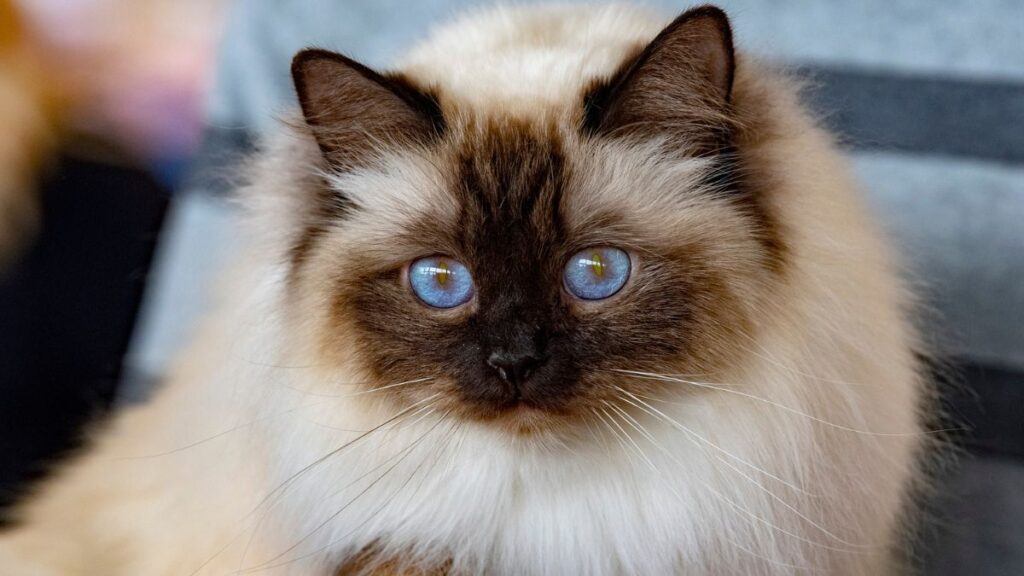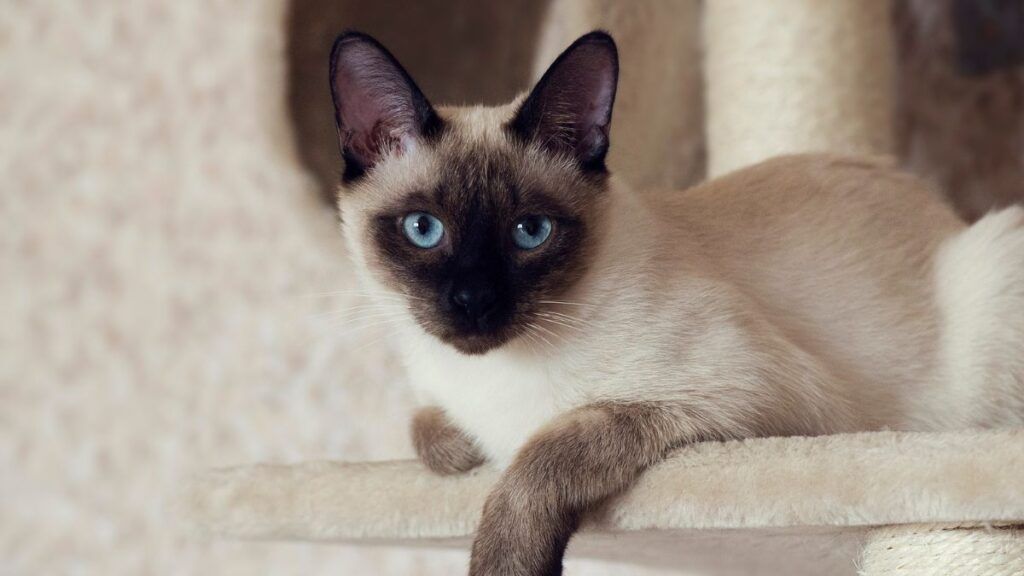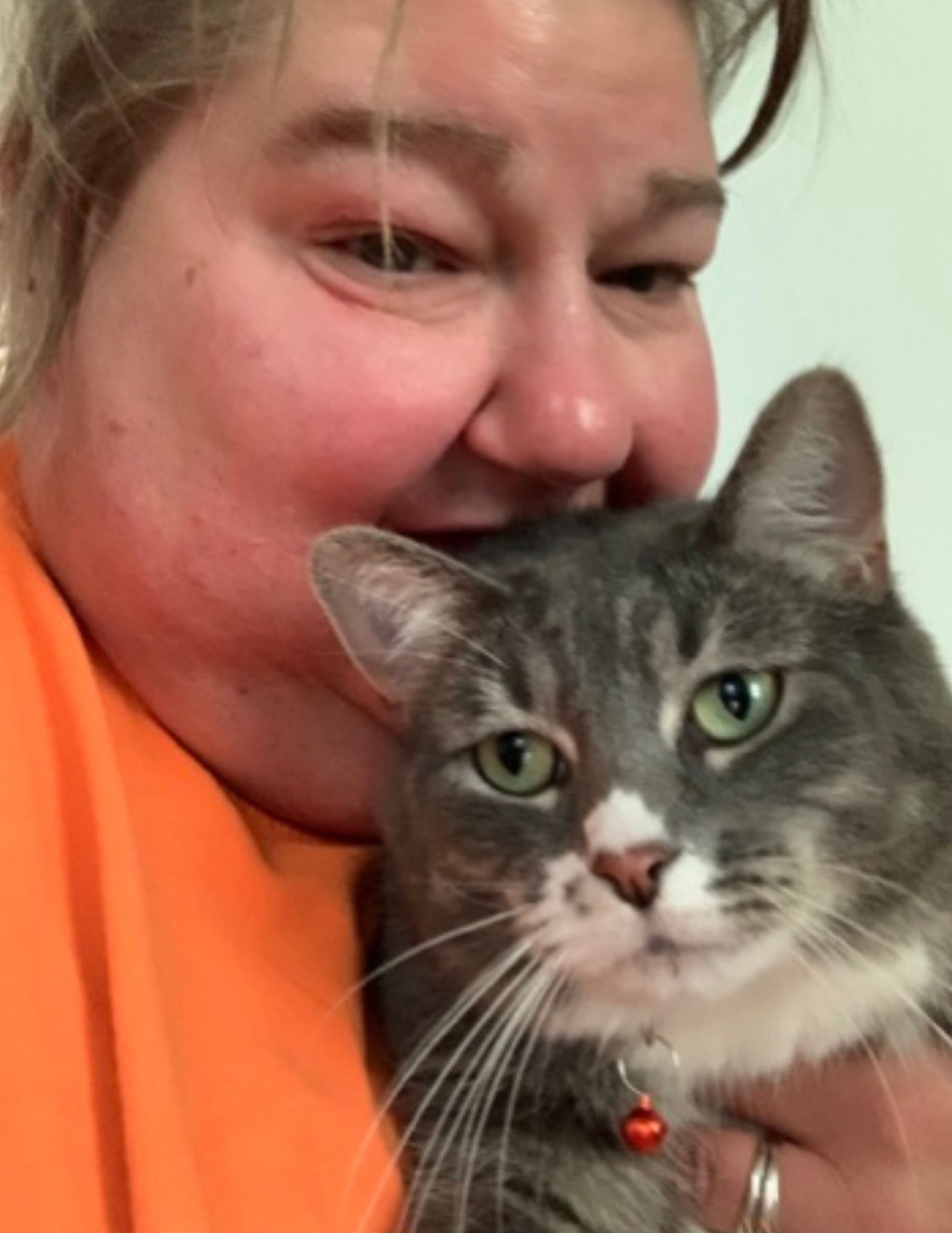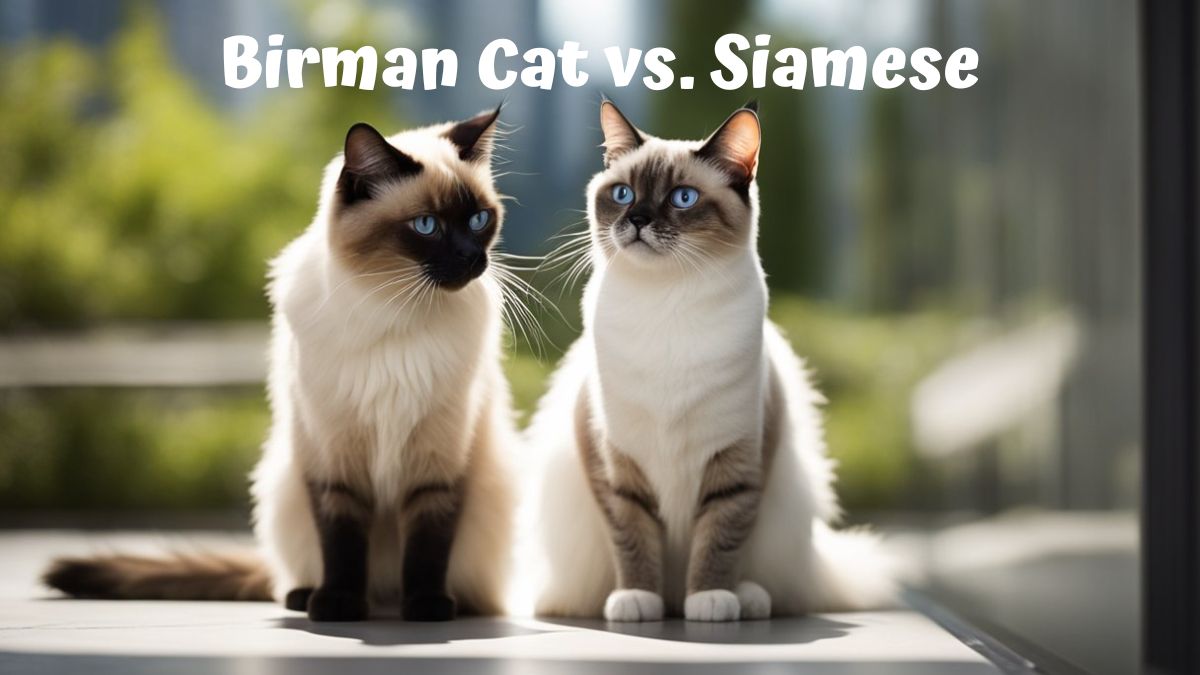The Birman and Siamese cats are popular breeds among cat enthusiasts, known for their unique appearances and charming personalities.
With their distinctive markings, colors, and expressive eyes, these feline companions have captured the hearts of many throughout the years.
As they share similarities and differences, understanding their characteristics can help potential cat owners choose the right breed for their home.
Birman Cat vs. Siamese
Birman Cat

Birman cats, originating from Burma, are known for their distinctive features, such as a silky coat, blue eyes, and attractive color points.
These affectionate and gentle cats come in various colors, including seal, blue, chocolate, and lilac points.
With their calm nature and tendency to bond with their owners, Birmans make excellent companions for families and single households.
Siamese Cat

Siamese cats, on the other hand, have their roots in Thailand and boast slender bodies, sleek short coats, and striking blue almond-shaped eyes.
They are an energetic and sociable breed, often vocalizing their thoughts and opinions.
Coming in four primary color points – seal, chocolate, blue, and lilac – these intelligent felines thrive on attention and are well-suited for households where they can be center stage.
Origins and History
Sacred Beginnings of the Birman
The Birman, also known as the Sacred Cat of Birma, has a mysterious and enchanting origin story. It is believed that these elegant felines were once the sacred companions of ancient priests in Burma.
Legends say that the Birman cats received their stunning blue eyes and color-pointed fur as symbols of divine protection.
In the late 19th century, a Frenchman named Auguste Pavie encountered these beautiful cats in Asia and decided to bring them to Europe.
It was not until 1925 that the Birman was officially recognized as a breed in France.
Siamese Cats: A Rich Legacy
Siamese cats, on the other hand, have a more well-documented history. These intriguing cats have been admired in their native land of Siam, now known as Thailand, for centuries.
Ancient manuscripts depict the highly revered Thai cats living amongst royalty and within Buddhist temples.
In the late 19th century, Siamese cats traveled to America and Europe as diplomats and world travelers became captivated by their exotic beauty and lively personalities.
| Origins | Birman | Siamese |
|---|---|---|
| Place | Burma (Myanmar) | Siam (Thailand) |
| Symbolic Element | Blue eyes & color-pointed fur | Elegance and agility |
| Beginnings | Sacred companions of priests | Royal pets |
| Introduction | Auguste Pavie, late 19th century | Late 19th century |
Popularity in the United States
Birman and Siamese cats gained significant popularity in the United States after World War II. Their unique appearance, intelligence, and social nature captured people’s hearts nationwide.
American soldiers and travelers brought them home from their overseas ventures, and soon, their popularity as pets and show animals skyrocketed.
By the mid-20th century, Birmans and Siamese cats had established themselves as beloved breeds and continue to charm cat enthusiasts to this day.
Physical Characteristics and Breed Standards

Birman Breed Markings and Features
Birman cats are medium-sized, long-haired cats with a silky coat. Their most distinctive feature is their white paws, known as “gloves.”
These gloves should extend evenly across all four paws. Birman breed standards dictate that the coat color should be light, preferably cream or fawn, with darker points on the ears, face, legs, and tail.
The seal and blue points are two common color points for Birmans. Seal point Birmans have a dark brown color on their color points, while blue point Birmans display a slate gray.
Another important characteristic of Birmans is their deep blue, almond-shaped eyes.
Distinguishing Siamese Cats
Siamese cats are also medium-sized but have short hair instead of long hair.
They stand out due to their sleek body and elegant appearance.
An attractive physical characteristic of Siamese cats is their color points, which primarily include seal, blue, chocolate, and lilac points. However, unlike Birmans, Siamese cats do not have white paws.
The breed standard for Siamese cats highlights their wedge-shaped head and large, pointed ears. These cats also have striking, almond-shaped, deep blue eyes.
Their coat is short and sleek, with a fine texture.
Coat Color and Texture
| Feature | Birman | Siamese |
|---|---|---|
| Coat Color | Light, with darker color points | Light, with darker color points |
| Paws | White “gloves” | No white paws |
| Hair Length | Long hair | Short hair |
| Coat Texture | Silky, soft | Short, fine |
Birman and Siamese cats are known for their beautiful, contrasting coat colors and striking, deep blue eyes.
The primary difference in coat color and texture between the two breeds is the length and feel of their fur.
Birmans have a long, silky coat, while Siamese cats have short, fine fur. Additionally, Birmans are recognized by their unique white paws, which are not present in Siamese cats.
Related: Striped Siamese Cat: Everything You Need To Know About These Felines
Behavior and Temperament

The Affectionate Nature of Birmans
Birman cats are known for their affectionate nature and thrive on bonding with their human companions.
These gentle felines enjoy cuddling and spending time with their family members.
Birmans display a low vocalization pattern compared to other breeds, which makes them a calmer choice for families seeking a quiet cat companion.
Siamese Energy and Vocalization
On the contrary, Siamese cats exhibit a very high energy level and are often described as active cats.
They are known for their impressive acrobatics and need sufficient playtime to burn off excess energy.
These intelligent cats can develop compulsive behavior if not properly mentally stimulated, so providing puzzle toys and interactive play is essential to maintain their overall well-being.
Siamese cats are also famous for their vocalization and will not hesitate to express their opinions, often engaging in long conversations with their owners.
Cats and Social Interaction
Birman and Siamese cats value social interaction and may become lonely or depressed if left alone for extended periods.
However, they differ in their approach to socialization.
While Birmans prefer a more relaxed and laid-back interaction, Siamese cats are known to be highly social and outgoing with their family members, other pets, and even strangers.
Siamese Cats:
- High energy
- Compulsive behavior
- Vocalization Birman Cats:
- Affectionate
- Low vocalization
- Calm temperament
Care and Health Considerations

Managing Coat Care for Birman and Siamese Breeds
The Birman breed is a long-haired cat that requires regular grooming to maintain its coat in good condition.
Brushing their fur at least twice a week helps prevent matting and keeps their coat healthy.
On the other hand, a Siamese cat has a short, sleek coat, meaning average shedding is less frequent, and they require minimal grooming, usually only once a week.
Recognizing Health Issues
Both Birman and Siamese breeds are prone to specific health issues, and early recognition can help ensure the best care for your feline companion.
One common health issue that affects both breeds is hypertrophic cardiomyopathy.
Responsible cat owners must be aware of this potential heart condition and watch for signs, including lethargy, difficulty breathing, and decreased appetite.
Some other health issues to be aware of include:
- Birman: Kidney dysfunction and congenital deafness.
- Siamese: Respiratory issues, vision problems, and dental issues.
It is essential to provide each cat breed with regular veterinary check-ups to monitor their health and catch potential issues early on.
Suitability for Families and Allergy Sufferers
When considering which breed is best for your family, especially if you have allergy sufferers, it’s crucial to consider their compatibility.
Due to their fur, long-haired cats generally produce more allergens, making the Birman less suitable for allergy sufferers.
While the Siamese’s short coat produces fewer allergens, it isn’t a hypoallergenic breed, but it could be a better option for those with allergies.
Both breeds are known for their affectionate and social nature, making them great family companions.
The Birman tends to be more laid-back and gentle, while the Siamese is known for its vocal and active personality.
Related: Siamese Cat With White Paws: Complete Guide to the Snowshoe Cat
Choosing the Right Cat Breed

Birman Vs. Siamese: Matching Your Lifestyle
When choosing the right cat breed, cat lovers should consider their lifestyles and how well the breed aligns with them. Birman and Siamese cats make excellent companions but have distinct differences.
Birman Cats:
- Affectionate and gentle
- Moderate energy levels
- Gets along well with other pets
Siamese Cats:
- Highly social and vocal
- High energy levels
- Loves attention and playing
For a more relaxed lifestyle, a pair of Birman cats may be a better fit, while Siamese kittens would make a good idea for someone who can devote more time and energy to their cat’s needs.
Thinking of a Child-Friendly Breed?
Consider the cat’s temperament, size, and energy levels when looking for a child-friendly breed. Both Birman and Siamese cats can be suitable for families with children but have different characteristics:
| Cat Breed | Temperament | Size | Energy Level |
|---|---|---|---|
| Birman | Affectionate | Medium | Moderate |
| Siamese | Social, Vocal | Medium | High |
Birman cats tend to be more laid-back and gentle, which is excellent for families with young kids, while the Siamese breed’s high energy levels might be better suited for older children who can engage in play and interaction.
The Commitment to a Long-Haired Cat
While Siamese cats have short fur that requires minimal grooming, Birman cats, like Ragdoll cats, have long fur that needs regular upkeep. If you’re considering a long-haired cat like a Birman, be prepared for the following:
- Frequent brushing: To prevent mats and tangles, brush your Birman’s fur at least twice a week.
- Bathing: Long-haired cats may require occasional baths to keep their fur clean and debris-free.
- Hairballs: Long fur can lead to hairballs. Be prepared to provide your cat with hairball remedies if necessary.
Choosing the right cat breed is an important decision. By considering your lifestyle, the needs of your family, and the commitment required for grooming and care, you can choose between a Birman or Siamese cat as your furry companion.

Meet Ann Haasnoot, the passionate founder of CatFurLife.com. A lifelong cat lover from Wisconsin, Ann combines her extensive feline behavior and care knowledge with her love for writing. On her website, she shares invaluable insights about cat breeds, care tips, and her experiences with her beloved furbaby, aiming to deepen the bond between cats and their human companions.

